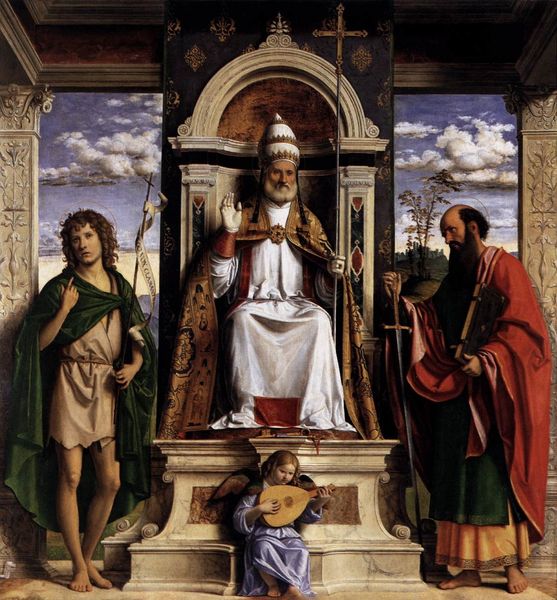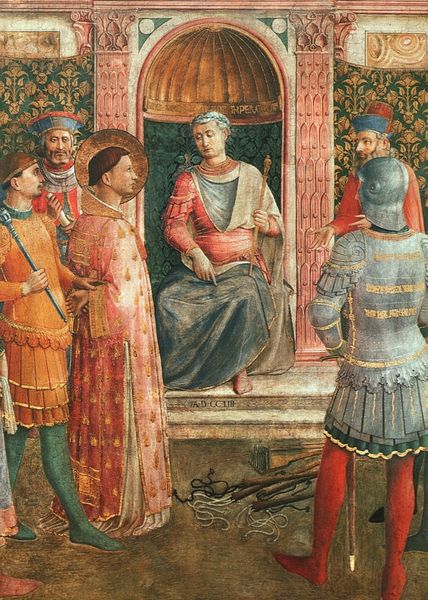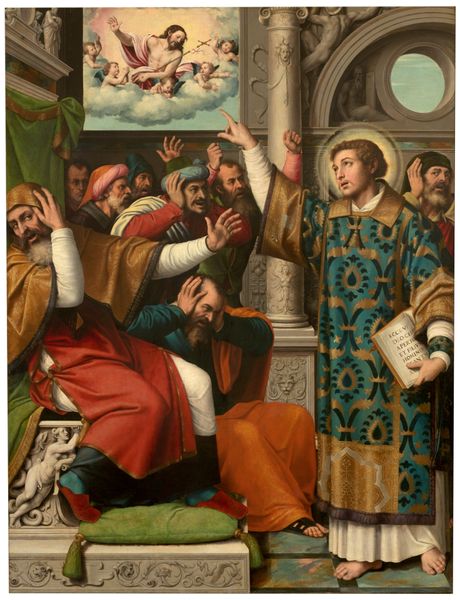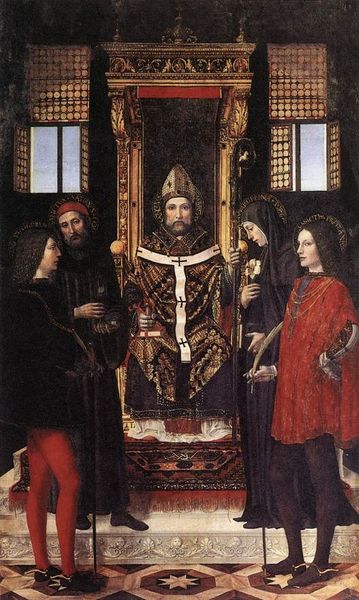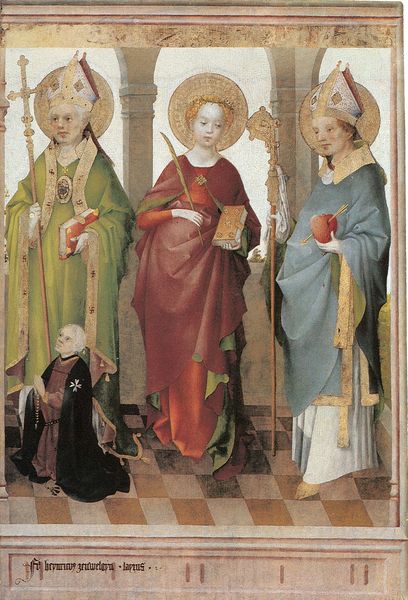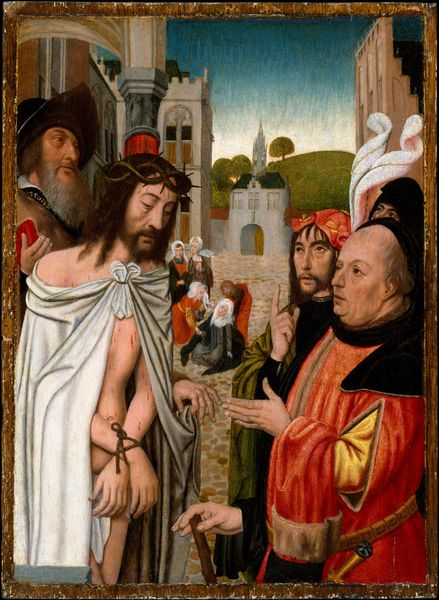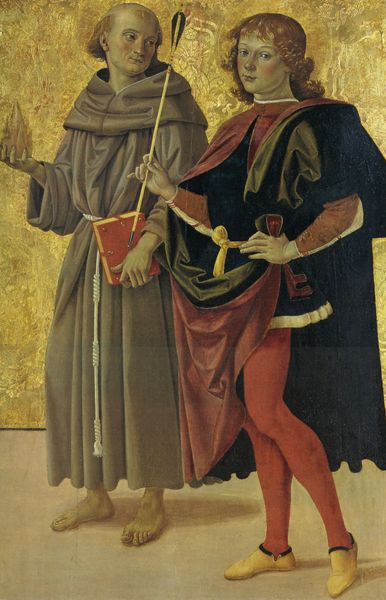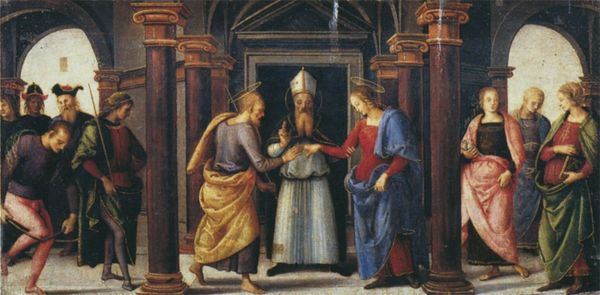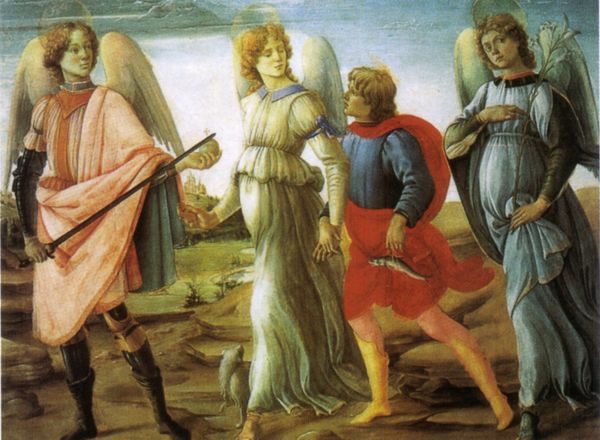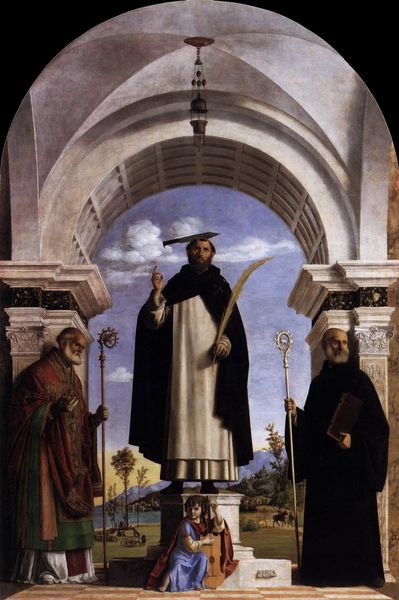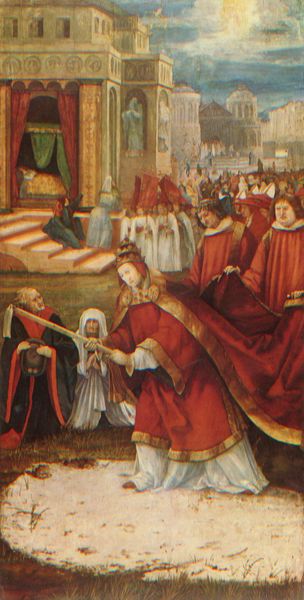
SS. Vincent of Saragossa, James and Saint Eustace, Altarpiece of the Cardinal of Portugal 1468
0:00
0:00
painting, oil-paint
#
portrait
#
painting
#
oil-paint
#
figuration
#
oil painting
#
history-painting
#
italian-renaissance
#
mixed media
Copyright: Public domain
Curator: Right now, we're standing in front of Antonio del Pollaiolo's “SS. Vincent of Saragossa, James and Saint Eustace, Altarpiece of the Cardinal of Portugal," painted in 1468. A truly remarkable piece of Italian Renaissance art. Editor: Wow, immediately I'm struck by the... formality, yet also a strange fragility. It’s like these saints are caught between worlds. Curator: You’ve honed in on something interesting! These are saints depicted in oil paint. Note the halo-like golden discs that don the top of the three saints’ heads. And I think those “caught between worlds” vibe that you sensed probably speaks to a Renaissance concern, about this shift from medieval spirituality to early humanism, perhaps? Editor: The sandals seem a bit too… earthbound. And isn't it funny how these supposed paragons of virtue all look so different? One looks like a brooding intellectual, one is like a slender courtier, and the other? A fashion plate with an important office. It’s as if it blends heavenly ideas with very specific identities and concerns. Curator: Precisely. It's a symphony of symbolic references that really get going if you begin with a brief rundown of who’s featured. On the left stands Vincent of Saragossa, traditionally the patron saint of those who deal with wine. Then, in the center is Saint James. And the gent on the right is Eustace. Editor: Saint James even carries a staff. Is it symbolic of, I don’t know, strength? I also love the hat in the foreground… What could be more of a symbol of worldly things than clothing! Is that intentional do you think? Curator: Almost certainly, and let's remember the patron, a Portuguese cardinal who wanted, needed even, to demonstrate wealth, status, power... and piety all at once. A sort of can-do blend of Renaissance ideals in one canvas. Pollaiuolo delivers. He shows you his incredible skill in rendering drapery, architecture, facial expression... he's covering all his bases. Editor: So, not just religious iconography then, but social statement too. I see, that infuses it with all this new significance, makes it feel very alive even now, as it captures that complex transitional moment. Curator: Agreed. There's so much happening within the pictorial space that invites and deserves repeat viewing. What starts as simply something pleasing reveals depths, in time. Editor: Absolutely. A great testament to cultural symbolism as an important layer of meaning, like peeling the skin off an onion.
Comments
No comments
Be the first to comment and join the conversation on the ultimate creative platform.


